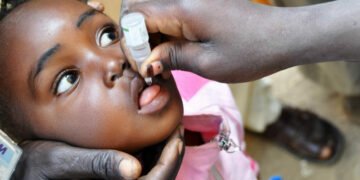World AIDS day is marked on this day every year all over the world to remind the international community that the scourge is still a menace that must eradicated.
On this day set aside to raise awareness about the pandemic caused by the spread of HIV virus, the infection proper and the mourning of those who have died of the disease. It is also a day to remind the world of the social implication of not empathizing with the patients.
The theme of this year’s event is ‘Equalize’. It is a call to take the proven practical steps necessary to address inequalities and help end AIDS discrimination and stigmatization.
It is instructive to note that the virus that causes the dreaded HIV is one that damages the immune system. The immune system helps the body fight off infections. Untreated HIV infects and kills CD4 cells, which are a type of immune cell called T cells. Over time, as HIV kills more CD4 cells, the body is more likely to get various opportunistic infections and cancer.
Additionally, HIV is transmitted through body fluids that include: blood semen, vaginal and rectal fluids, breast milk.The virus doesn’t spread in air or water, or through casual contact.
HIV is a lifelong condition and currently, there is no cure, although many scientists are working to find one. However, with medical care, including a treatment called antiretroviral therapy, it’s possible to manage HIV and live with the virus for many years.
Without treatment, a person with HIV is likely to develop a serious condition called AIDS. At that point, the immune system is too weak to fight off other diseases and infections. Untreated, life expectancy with AIDS is about three years.
With antiretroviral therapy, HIV can be well-controlled and life expectancy can be nearly the same as someone who has not contracted HIV.
Sadly, Nigeria is reported to be the second-largest HIV epidemic country in the world since the disease found its way into the country in the 1980s. The U.S. Agency for International Development’s (USAID) Office of HIV and TB control have revealed that about two million Nigerians are still living with HIV/AIDS.
It is gratifying to note that the Director-General of Nigeria’s National Agency for the Control of AIDS (NACA), Gambo Aliyu, recently said available data confirmed a decline in new HIV infections in the country.
Aliyu, while speaking at a press conference ahead of the 2022 World AIDS Day (WAD), said new HIV infections gradually declined from 103,404 in 2019 to 92,323 in 2021.
He said this is an indication that Nigeria will meet the United Nations’ target of ending HIV/AIDS by 2030.
He also said that as at the end of September, 1,619,133 persons are on treatment in the country, which he noted represents a significant leap when compared to 838,020 persons that were on HIV treatment in 2017.
Media reports indicate also a significant growth in key population treatment centres with 10 in 2017 with a coverage of 16,147 to 118 in 2021 with coverage of over 221,010.
Regrettably, in our view,150,000 children live with HIV in Nigeria and only 80,000 receive regular treatment. This is sad.
In the considered opinion of this newspaper , every unborn child has the right to be protected from HIV. Indeed, a child can be protected from having HIV. Government officials need to go closer to the communities and sensitize them on the dangers of HIV. There is a need to intensify community sensitisation.
Similarly, low access to antiretroviral treatment, in addition to limited prevention efforts, is a leading cause of these deaths.
Regrettably, in our opinion, stigmatisation is still the problem in the fight against HIV. While Nigerians and, indeed, the entire humanity need to know that the disease is not a death sentence, it is important for the authorities to prioritize the management of the ailment when it has already been contacted.
From the foregoing, we call for reform policies restricting people living with HIV and key populations from accessing treatment services. We also call on the federal and state governments to intensify public enlightenment and training of officials on the dangers of HIV/ AIDS. Health centers in the states and rural areas should be adequately equipped with free HIV drugs.NACA should be funded adequately to carry out its mandate.
Furthermore, we aver that structural barriers that are affecting service delivery must be removed.
We also believe that religious leaders have a major role to play in stemming the tide of the disease as abstinence is a major factor in reducing the prevalence of the disease in the country.
It is however pertinent to restate that the ailment cannot and should not be a barrier to living life to the fullest provided the patient takes his or her treatment seriously as directed by health officials.





